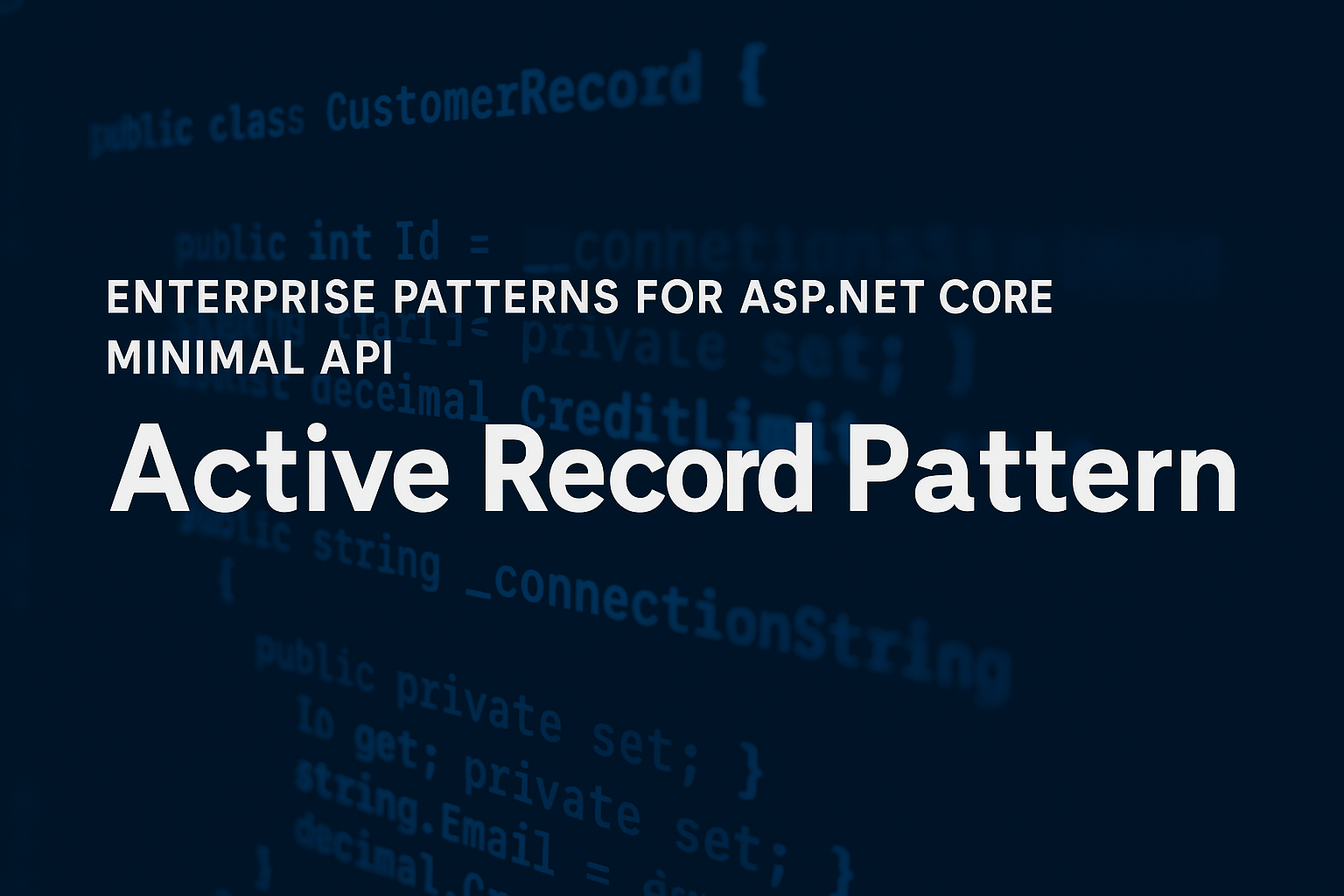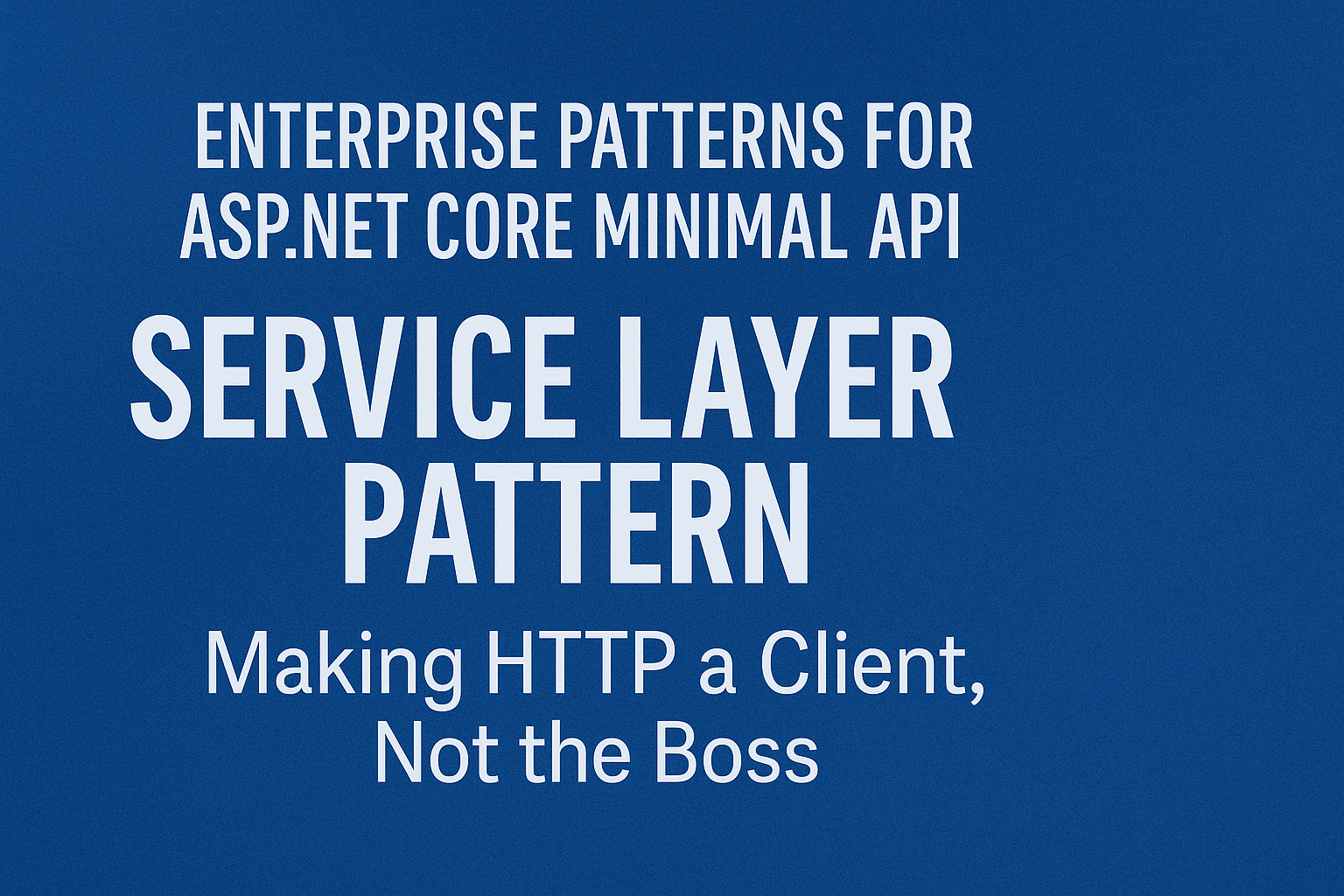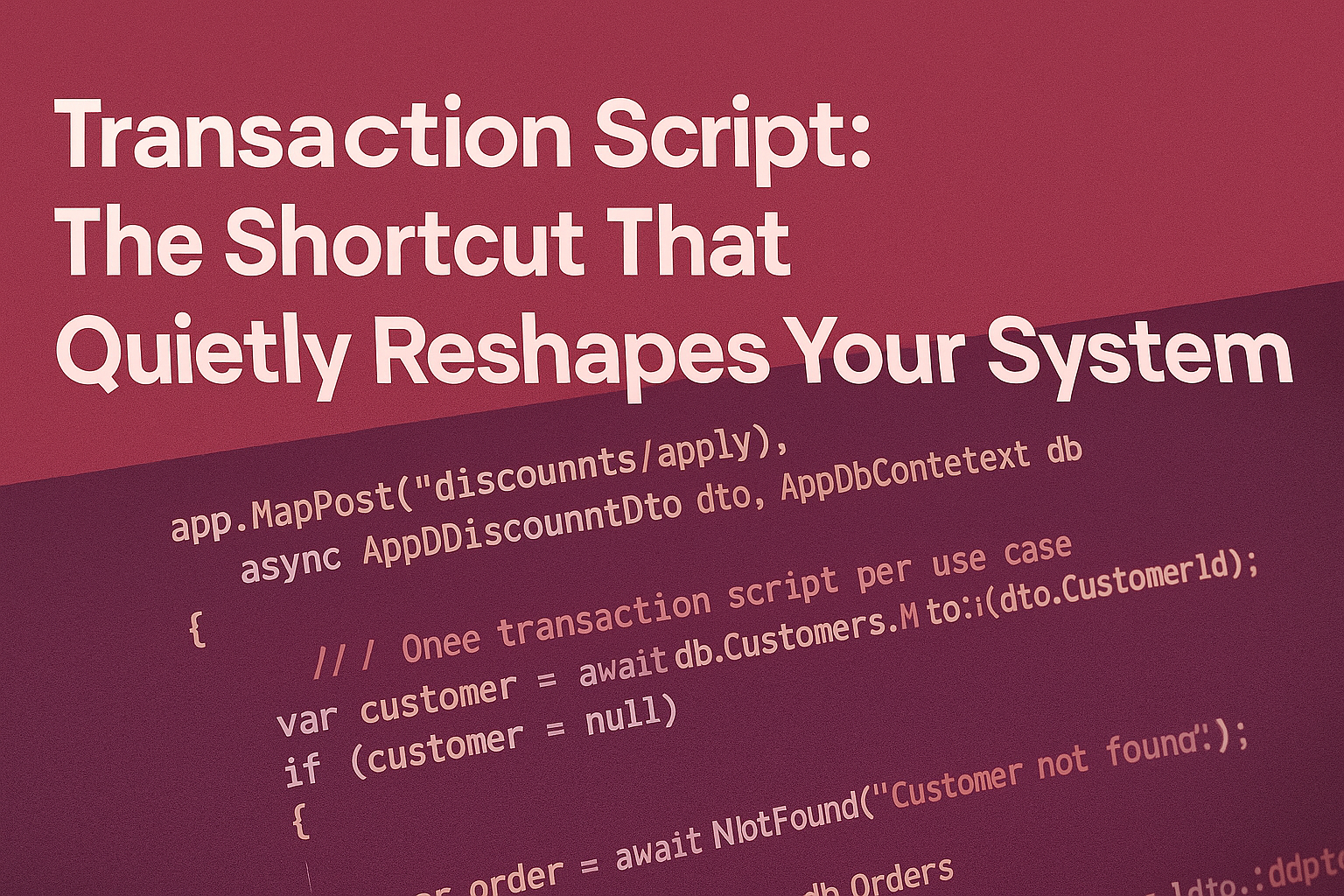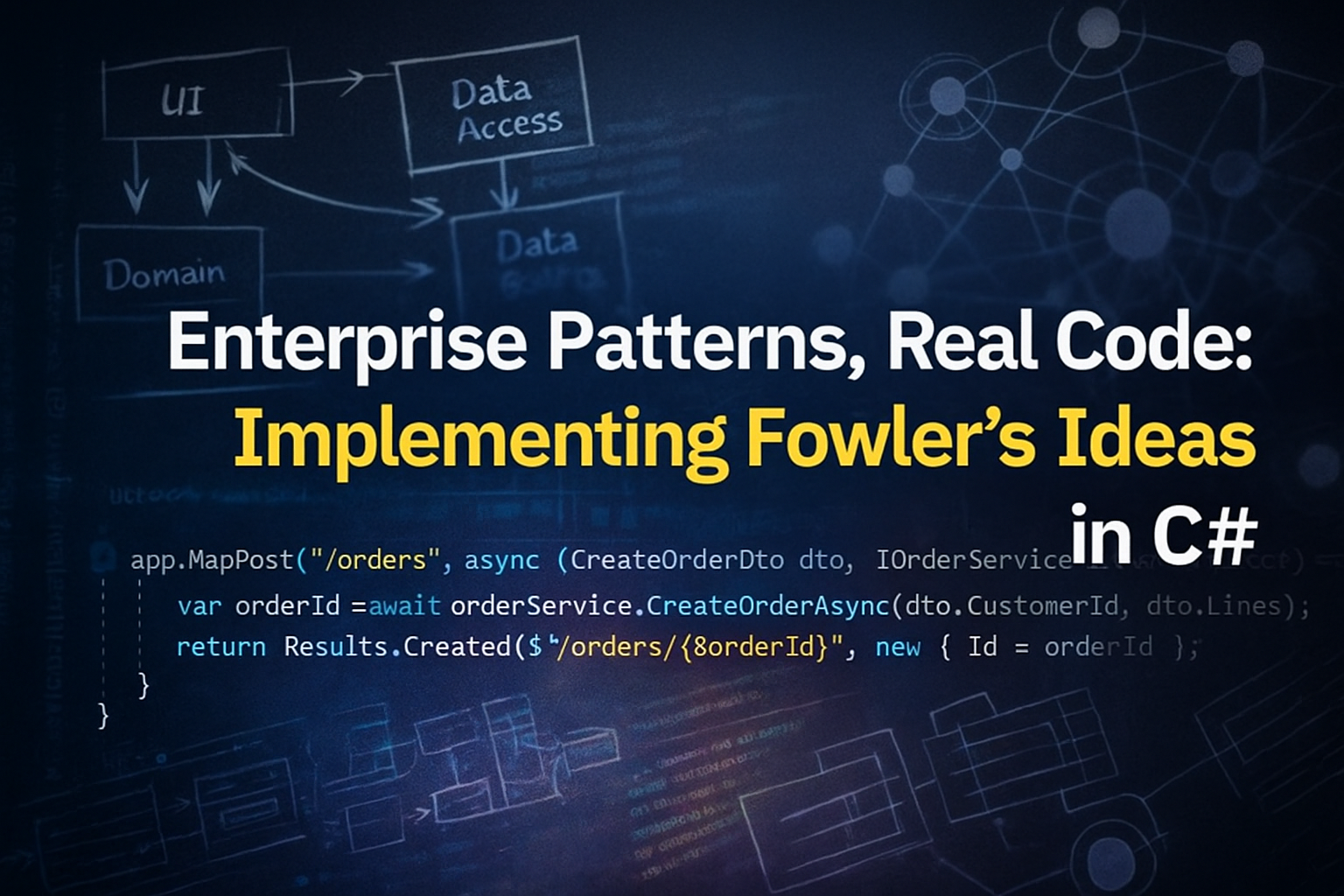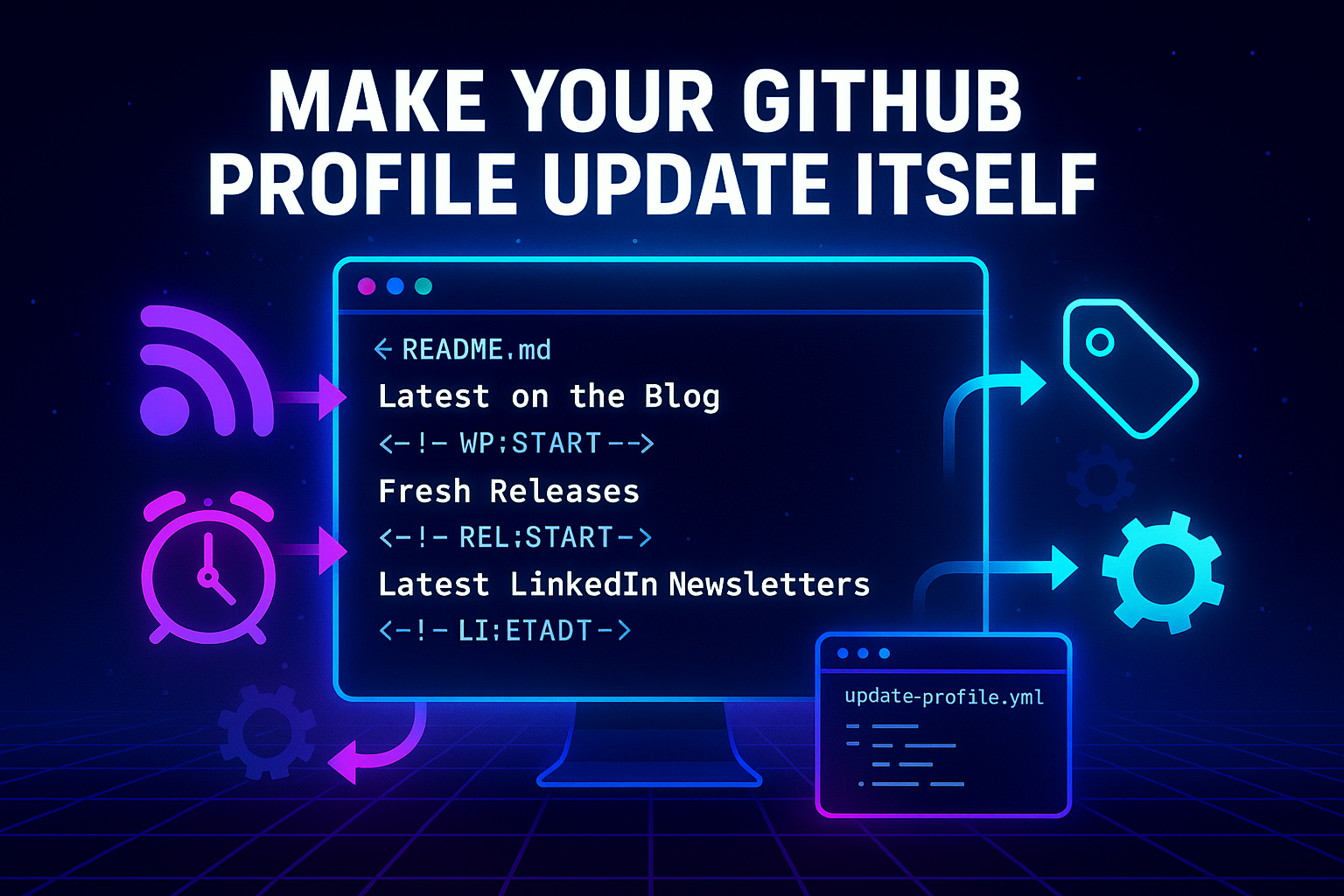Enterprise Patterns for ASP.NET Core Minimal API: Active Record Pattern
Sometimes, your domain is really just rows in a table. You have a Customers table with Id, Email, and CreditLimit.You load a row, tweak a field, and write it back.That is the whole story. In that situation, introducing a complete Domain Model, Data Mapper, and Repository stack can feel like ceremony for ceremony’s sake. The Active Record pattern exists for precisely this scenario: when your object and …
Continue Reading
Debugging Entity Framework Core: 8 Real-World Query Anti‑Patterns (and How to Fix Them)
This is my post for the 2025 C# Advent. Check out all the great posts! I want to wish you a Merry Christmas, Happy Holidays, Happy Hanukkah, Happy Kwanzaa, and, finally, Debugging Entity Framework Core: 8 Real-World Query Anti‑Patterns (and How to Fix Them) I want to wish you a Merry Christmas, Happy Holidays, Happy Hanukkah, Happy Kwanzaa, and, finally, Happy …
Continue Reading
Enterprise Patterns for ASP.NET Core Minimal API: Service Layer Pattern – Making HTTP a Client, Not the Boss
Open a typical ASP.NET Core project, and you will often see the same shape: If you have ever tried to add a second client (a background worker, a message handler, or a gRPC API), you probably copied a large chunk of controller logic and hoped no one noticed. The Service Layer pattern exists to stop that. Instead of letting controllers …
Continue Reading
Enterprise Patterns for ASP.NET Core Minimal API: Domain Model Pattern – When Your Core Rules Deserve Their Own Gravity
Look at a typical enterprise ASP.NET Core application, and you often see the same pattern: If you need to know how orders work, you do not open a single file. You read controllers, queries, and database scripts until your eyes blur. The truth about the business lives everywhere and nowhere. The Domain Model is the pattern that reverses this arrangement. …
Continue Reading
Enterprise Patterns for ASP.NET Core Minimal API: Transaction Script Pattern – The Shortcut That Quietly Reshapes Your System
Picture this. Product wants a minor discount tweak: if an order total is below 100, no discount. You open an endpoint, add a conditional, save and push. Ten minutes, job done. Three months later, that simple rule exists in six different endpoints, each with its own tiny twist. Someone fixes a bug in two of them, forgets the others, and …
Continue Reading
Stop Letting Your Controllers Talk to SQL: Layered Architecture in ASP.NET Core
Walk into almost any long-lived enterprise codebase, and you will find the same pattern: At that point, adding a new feature feels like surgery without a map. You poke at one place, something bleeds somewhere else, and nobody is sure why. Layered architecture exists to stop that. In this post, we will walk through a practical version of Fowler’s layered …
Continue Reading
Enterprise Patterns, Real Code: Implementing Fowler’s Ideas in C#
Most enterprise systems already use patterns from Martin Fowler’s Patterns of Enterprise Application Architecture. The twist is that many teams use them without naming them, half implement them and then wonder why the codebase fights back. If your ASP.NET solution contains controllers that talk straight to SQL, services that return HTTP responses, and entities that call SaveChanges, you are already …
Continue Reading
Licensing Compliance in the Courtroom: Why It Matters More Than You Think
If you’re looking to enhance your organization’s systems through quality assessments, I would love to connect with you. Let’s explore how I can contribute to your success. You can easily reach me via my contact page here: https://woodruff.dev/contact/ In nearly every industry, open-source code fuels innovation. Developers harness open libraries, frameworks, and tools to accelerate features and cut costs. Yet, …
Continue Reading
Secure Application Development Starts With Architecture
If you’re looking to enhance your organization’s systems through quality assessments, I would love to connect with you. Let’s explore how I can contribute to your success. You can easily reach me via my contact page here: https://woodruff.dev/contact/ Security cannot be patched in later; it is structural Most organizations still treat application security as part of the endgame. They build, …
Continue Reading
Make Your GitHub Profile Update Itself (WordPress posts, GitHub releases, LinkedIn newsletters)
Want your GitHub profile to look alive without spending your weekends copy-pasting links? Let’s wire it to your actual work: blog posts from WordPress, newly published releases, and your newsletter issues. You will get a profile that quietly refreshes itself on a schedule and on events. We will use: Demo vibe: low maintenance, high signal. Set it once, let it …
Continue Reading
